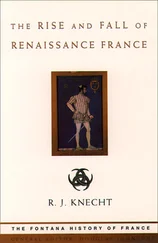Jared Diamond - The rise and fall of the third chimpanzee
Здесь есть возможность читать онлайн «Jared Diamond - The rise and fall of the third chimpanzee» весь текст электронной книги совершенно бесплатно (целиком полную версию без сокращений). В некоторых случаях можно слушать аудио, скачать через торрент в формате fb2 и присутствует краткое содержание. Год выпуска: 1991, ISBN: 1991, Издательство: RADIUS, Жанр: Биология, на английском языке. Описание произведения, (предисловие) а так же отзывы посетителей доступны на портале библиотеки ЛибКат.
- Название:The rise and fall of the third chimpanzee
- Автор:
- Издательство:RADIUS
- Жанр:
- Год:1991
- ISBN:0-09-174268-4
- Рейтинг книги:4 / 5. Голосов: 1
-
Избранное:Добавить в избранное
- Отзывы:
-
Ваша оценка:
- 80
- 1
- 2
- 3
- 4
- 5
The rise and fall of the third chimpanzee: краткое содержание, описание и аннотация
Предлагаем к чтению аннотацию, описание, краткое содержание или предисловие (зависит от того, что написал сам автор книги «The rise and fall of the third chimpanzee»). Если вы не нашли необходимую информацию о книге — напишите в комментариях, мы постараемся отыскать её.
The rise and fall of the third chimpanzee — читать онлайн бесплатно полную книгу (весь текст) целиком
Ниже представлен текст книги, разбитый по страницам. Система сохранения места последней прочитанной страницы, позволяет с удобством читать онлайн бесплатно книгу «The rise and fall of the third chimpanzee», без необходимости каждый раз заново искать на чём Вы остановились. Поставьте закладку, и сможете в любой момент перейти на страницу, на которой закончили чтение.
Интервал:
Закладка:
I have discussed Creoles as if they appeared only with the rise of colonialism in the past 500 years. In fact, the social conditions that produced modern Creoles have arisen repeatedly during thousands of years of documented human history, and probably long before that. Hence some of the world's 'normal' languages may have passed through stages of creolization and gradually re-evolved a more complex grammar. The possible example closest to home is the language of these pages. There has been a long controversy among linguists over the history of the Germanic language family that includes English, and that presumably arose in the area of the Baltic Sea. As I shall discuss in Chapter Fifteen, Germanic languages belong to a wider grouping of languages termed Indo-European. All Indo-European languages clearly derived much of their vocabulary and grammar from an ancestral language known as proto-Indo-European, which may have been spoken in southern Russia 5,000 years ago and then spread west across Europe. However, the Germanic languages also include many word roots and grammatical features unique to them, and absent from all other Indo-European families. Familiar examples include the English words 'house', 'wife', and 'hand', close to the modern German words Haus, Weib, and Hand. The shores of the Baltic are the source of prized amber that was traded to southern Europe and Russia thousands of years ago, just as it is still traded around the world today. Could the Germanic languages have arisen as a Creole, when proto-Indo-European traders settled among proto-Germanic tribes of the Baltic to buy amber in exchange for pottery, battle-axes, and horses? Now let's pull together all these animal and human studies to try to form a coherent picture of how our ancestors progressed from grunts to Shakespeare's sonnets. A well-studied early stage is represented by vervet monkeys, with at least ten different calls that are under voluntary control, are used for communication, and have external referents. The calls may function as words, explanations, propositions, or as all of those things simultaneously. Scientists' difficulties in identifying those ten calls have been such that more surely await identification, but we still do not know how large the vervet vocabulary really is. We also do not know how far other animals may have progressed beyond vervets, because the vocal communications of the species most likely to have eclipsed vervets, the common and the pygmy chimp, have yet to be studied carefully in the wild. At least in the laboratory, chimps can master hundreds of symbols that we teach them, suggesting that they have the necessary intellectual equipment to master symbols of their own. The single words of young toddlers, like 'juice' as uttered by my son Max, constitute a next stage beyond animal grunts. Like vervet calls, Max's 'juice' may have functioned as some combination of a word, an explanation, and a proposition. But Max has made a decisive advance on vervets by assembling his 'juice' word from the smaller units of vowels and consonants, thereby scaling the lowest level of modular linguistic organization. A few dozen such phonetic units can be reshuffled to produce a very large number of words, such as the 142,000 words in my English desk dictionary. That principle of modular organization lets us recognize far more distinctions than can vervets. For example, they name only six types of animals, whereas we name nearly two million.
A further step towards Shakespeare is exemplified by two-year-old children, who in all human societies proceed spontaneously from a one-word to a two-word stage and then to a multi-word one. But those multi-word utterances are still mere word strings with little grammar, and their words are still nouns, verbs, and adjectives with concrete referents. As Bickerton points out, those word strings are rather like the pidgin languages that human adults spontaneously reinvent when necessary. They also resemble the strings of symbols produced by captive apes whom we have instructed in the use of those symbols.
From pidgins to Creoles, or from the word strings of two-year-olds to the complete sentences of four-year-olds, is another giant step. In that step were added words lacking external referents and serving purely grammatical functions; elements of grammar such as word order, prefixes and suffixes, and word root variation; and more levels of hierarchical organization to produce phrases and sentences. Perhaps that step is what triggered the Great Leap Forward discussed in Chapter Two. Nevertheless, Creole languages reinvented in modern times still give us clues to how these advances arose, through the Creoles' circumlocutions to express prepositions and other grammatical elements. As another illustration of how this might have happened, my Indonesian colleague and I were just in the process of reinventing prepositions when the helicopter picked us up and terminated our experiment in pidgin evolution. We had begun to assemble word strings that functioned as locative prepositional phrases but were still composed solely of nouns with concrete referents—strings such as 'spoon top plate' and 'spoon bottom plate', to mean that the spoon was on or under the plate. Many virtual prepositions in Neo-Melanesian, Indonesian, and other Creoles are similarly constructed.
If you compare the Neo-Melanesian advertisement on pages 150-51 with a Shakespearean sonnet, you might conclude that a huge gap still exists. In fact, I would argue that, with an advertisement like Katn insait long stua bilong mipela, we have come 99.9 % of the way from vervet calls to Shakespeare. Creoles already constitute expressive complex languages. For example, Indonesian, which arose as a Creole to become the language of conversation and government for the world's fifth most populous country, is also a vehicle for serious literature.
Animal communication and human language once seemed to be separated by an unbridgeable gulf. Now, we have identified not only parts of the bridges starting from both shores, but also a series of islands and bridge segments spaced across the gulf. We are beginning to understand in broad outline how the most unique and important attribute that distinguishes us from animals arose from animal precursors.
Try to understand this Neo-Melanesian advertisement for a department store: Kam insait long stua bilong mipela—stua bilong salim olgeta samting—mipela i-ken helpim yu long kisim wanem samting yu laikim bikpela na liklik long gutpela prais. I-gat gutpela kain kago long baiim na i-gat stap long helpim yu na lukautim yu long taim yu kam insait long dispela stua.
If some of the words look strangely familiar but do not quite make sense, read the advertisement aloud to yourself, concentrate on the sounds, and ignore the strange spelling. As the next step, here is the same advertisement rewritten with English spelling: Come inside long store belong me-fellow—store belong sellim altogether something—me-fellow can helpim you long catchim what-name something you likim, big-fellow na liklik, long good-fellow price. He-got good-fellow kind cargo long buyim, na he-got staff long helpim you na lookoutim you long time you come inside long this-fellow store.
A few explanations should help you make sense of the remaining strangenesses. Almost all the words in this sample of Neo-Melanesian are derived from English, except for the word liklik for 'little', derived from a New Guinean language (Tolai). Neo-Melanesian has only two pure prepositions: bilong, meaning 'of or 'in order to', and long, meaning almost any other English preposition. The English consonant/becomes p in Neo-Melanesian, as in stap for 'staff, andpe/a for 'fellow'. The suffix -pela is added to monosyllabic adjectives (hence gutpela for 'good', bikpela for 'big'), and also makes the singular pronouns 'me' and 'you' into plural ones (for 'we' and 'you'—plural). Na means 'and'. So the advertisement means:
Читать дальшеИнтервал:
Закладка:
Похожие книги на «The rise and fall of the third chimpanzee»
Представляем Вашему вниманию похожие книги на «The rise and fall of the third chimpanzee» списком для выбора. Мы отобрали схожую по названию и смыслу литературу в надежде предоставить читателям больше вариантов отыскать новые, интересные, ещё непрочитанные произведения.
Обсуждение, отзывы о книге «The rise and fall of the third chimpanzee» и просто собственные мнения читателей. Оставьте ваши комментарии, напишите, что Вы думаете о произведении, его смысле или главных героях. Укажите что конкретно понравилось, а что нет, и почему Вы так считаете.












